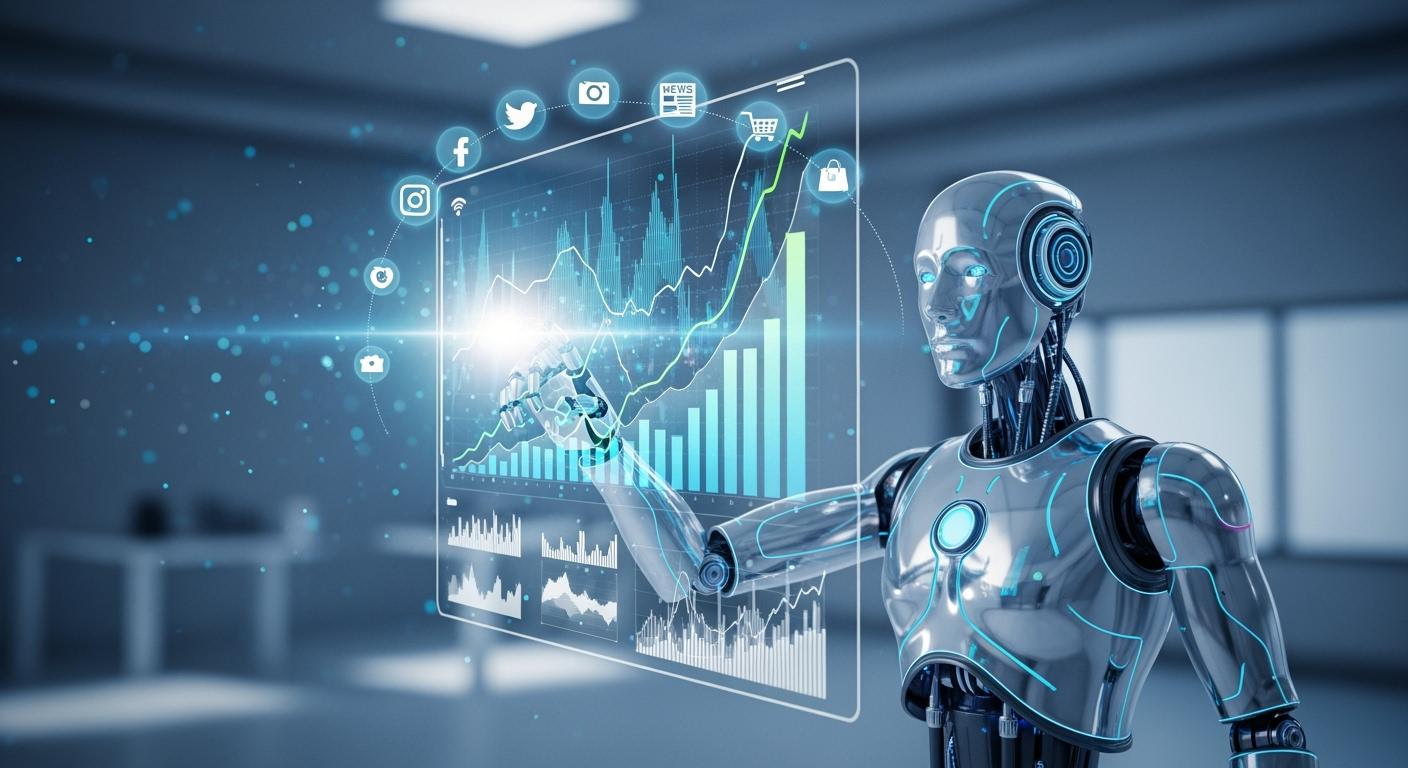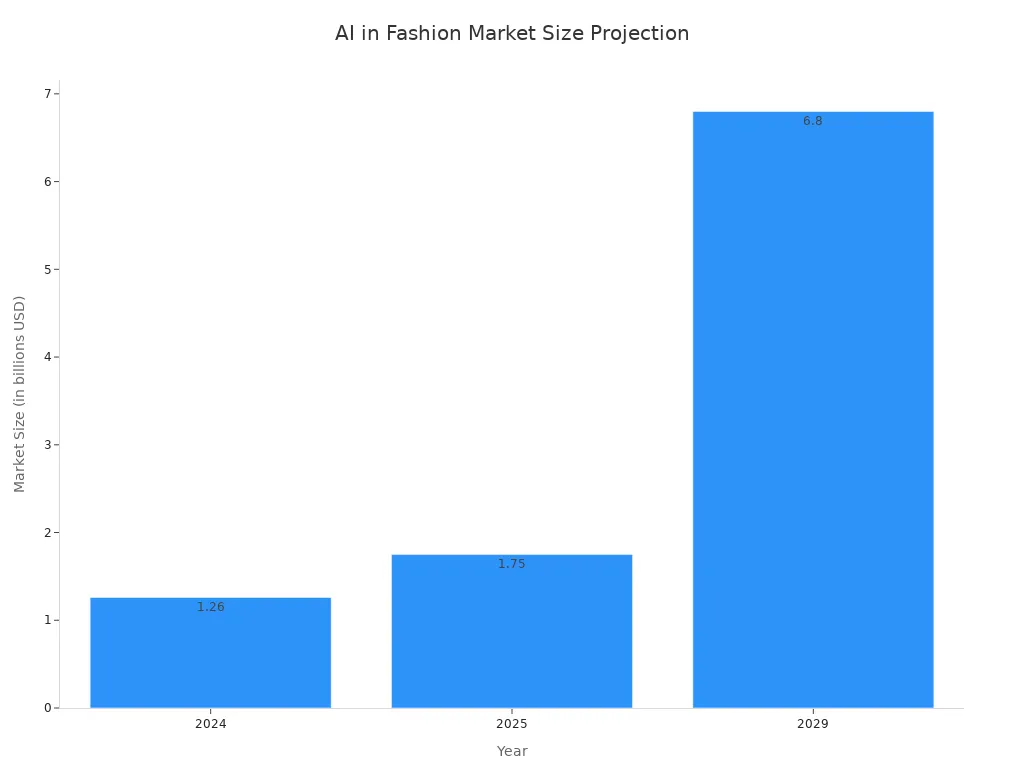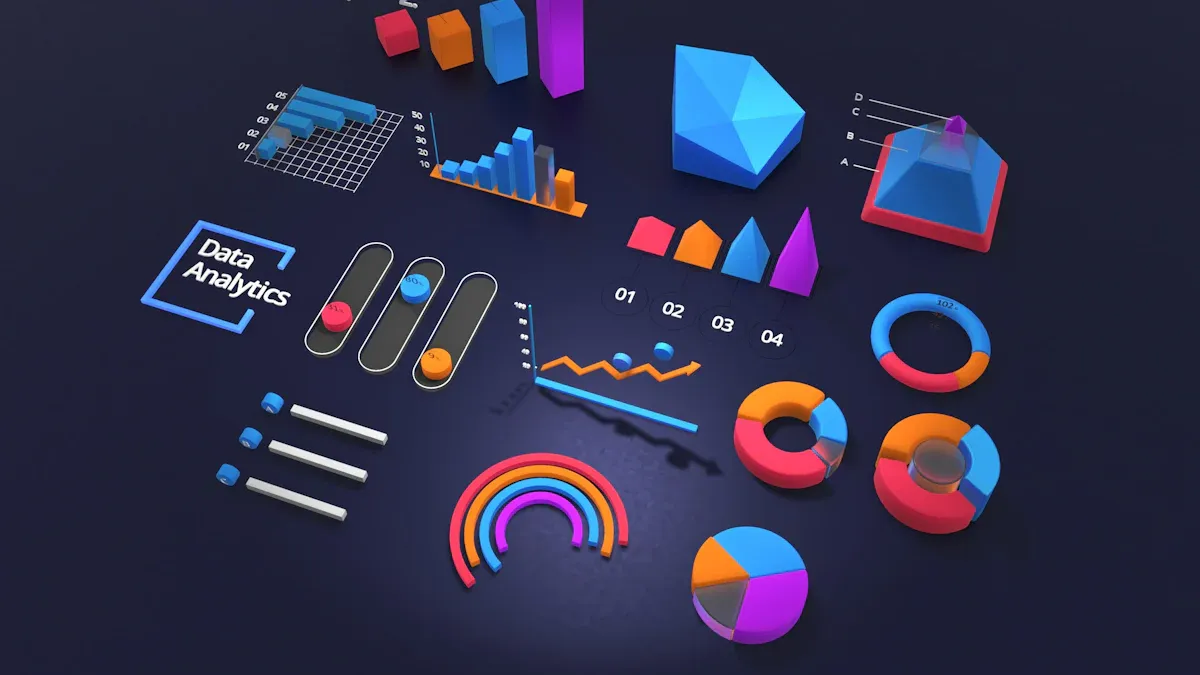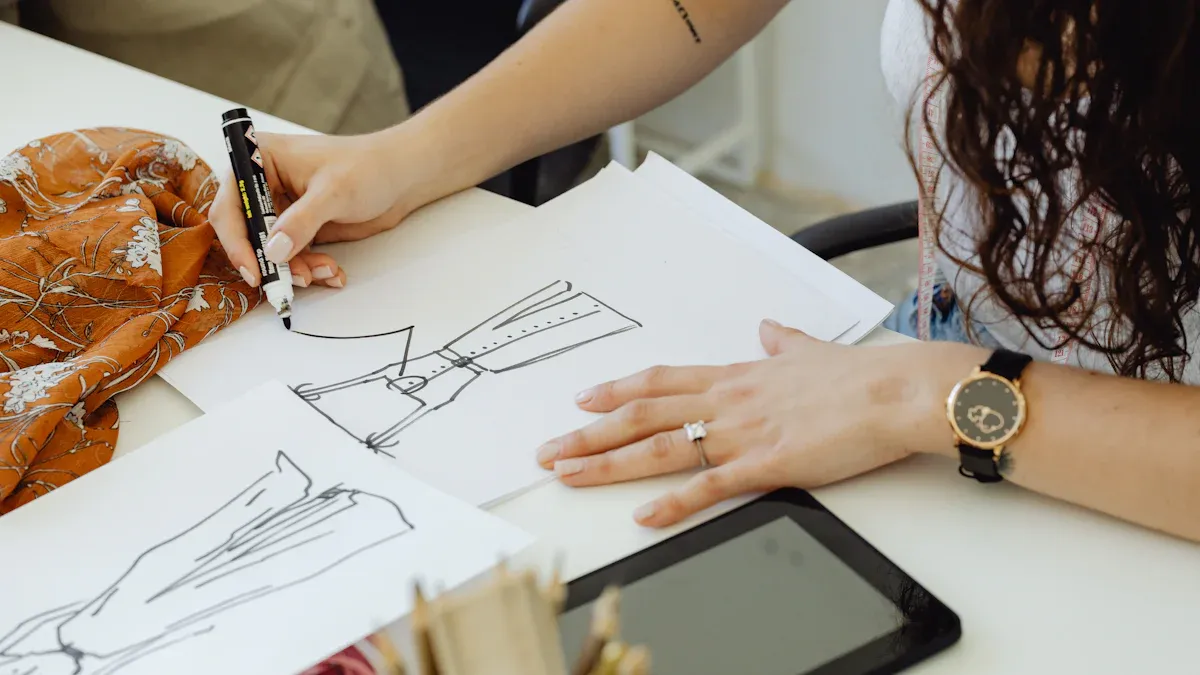
Essential platforms like Heuritech, WGSN, and Stylumia offer powerful ai tools. They are transforming ai fashion trend forecasting. These systems use advanced AI to analyze global runways and social media in real-time. This technology gives professionals a secret weapon for making faster, data-driven decisions in fashion retail. The rapid expansion of ai in fashion is undeniable. The market for ai in fashion shows significant growth, making ai fashion trend forecasting essential. Modern trend forecasting relies on these intelligent ai tools.

The Tech Behind AI Trend Forecasting

Artificial intelligence is not magic. It uses powerful technologies to turn massive amounts of data into clear insights. These ai tools give fashion brands a significant advantage. The core of ai fashion trend forecasting rests on three key pillars of technology.
Visual Recognition and Analysis
AI models analyze millions of images from social media and runways. This technology identifies emerging styles with incredible precision. It performs granular trend mining to spot micro-trends, like a new sleeve shape. Fast-fashion giants like Shein use this for rapid ai retail trend analysis. The process involves two main techniques:
- Object Detection: This identifies specific items like dresses or shoes in an image. It helps brands track the popularity of individual products.
- Semantic Segmentation: This classifies every pixel to understand context. It recognizes colors, patterns, and even ai innovative textile trends like velvet or lace.
This detailed analysis helps brands understand ai consumer behavior trends and ai seasonal fashion trends. It also tracks ai cultural influence on fashion trends.
NLP for Social Sentiment
Natural Language Processing (NLP) deciphers what consumers say online. It analyzes text from reviews, blogs, and social media posts. This process reveals public opinion about ai seasonal fashion trends. NLP tracks keywords related to:
- Fit
- Aesthetics
- Comfort
- Price
- Material
This sentiment data helps brands understand the emotional drivers behind ai consumer behavior trends. It also provides insights into ai sustainability trends in fashion. Understanding ai gen z shopping trends becomes easier with this technology. This form of ai retail trend analysis is crucial for personalized marketing.
Predictive Analytics for Commercial Success
Predictive analytics combines historical data with current signals to forecast future sales. This technology helps brands avoid overproduction and reduce waste, supporting sustainable fashion. It analyzes datasets like past sales, ai market trends and insights, and social media engagement. This analysis improves ai e-commerce market trend analysis. Companies like H&M use it to align new collections with public interest, ensuring ai seasonal fashion trends translate into commercial success. This approach is vital for ai fashion trend forecasting. It helps brands understand ai consumer behavior trends, ai emerging lifestyle trends, and ai sustainability trends in fashion. The technology also informs ai digital ad spending forecast and trends. It considers ai cultural influence on fashion trends, ai innovative textile trends, and ai emerging lifestyle trends. This powerful capability within ai in fashion helps predict ai gen z shopping trends and ai seasonal fashion trends, giving brands a clear path forward. The future of ai in fashion relies on these predictive models to guide decisions on ai sustainability trends in fashion and ai emerging lifestyle trends. This is how ai digital ad spending forecast and trends are shaped.
Top AI Tools for Fashion Forecasting

Choosing the right platform depends on a brand's specific needs. Some tools excel at analyzing consumer posts, while others provide broad market intelligence. Understanding the unique strengths of each platform is key to unlocking powerful insights for ai fashion trend forecasting.
Heuritech: Consumer Insights
Heuritech specializes in translating social media images into actionable data. It is the ideal tool for brands seeking to validate design choices with real-world consumer preferences. The platform's strength lies in its advanced visual recognition technology.
- Proprietary Image Recognition: Heuritech's AI analyzes millions of images from Instagram and TikTok. It categorizes over 2,000 details, including shapes, prints, and ai innovative textile trends.
- Audience Segmentation: It defines audience panels like Edgy, Trendy, and Mainstream. This helps brands understand how ai consumer behavior trends evolve from niche influencers to the mass market.
- Predictive Algorithms: Machine learning identifies early signals from edgy users. This allows brands to forecast ai seasonal fashion trends before they peak.
Damien Bertrand, former General Manager at Dior, noted, “We had some intuitions that we wanted to test and Heuritech helped us to validate those intuitions.” This highlights its power as a validation tool, turning creative hunches into data-backed decisions. It helps brands understand ai cultural influence on fashion trends and ai emerging lifestyle trends.
WGSN: Market Intelligence
WGSN offers a powerful blend of AI data science and human expert analysis. It provides comprehensive reports and long-range forecasts, making it perfect for large retailers and global brands needing deep market intelligence. Its methodology combines the best of machine precision and human insight.
WGSN's "analyst-in-the-loop" approach is unique. Experts manually tag images to train the AI, ensuring high accuracy. While machines identify patterns, human analysts provide context. This is crucial for understanding complex scenarios where historical data may not apply. This process helps track ai sustainability trends in fashion and ai emerging lifestyle trends.
| Feature | Heuritech | WGSN |
|---|---|---|
| Primary Focus | Visual trend detection from social media | Comprehensive market intelligence |
| Methodology | AI image recognition of consumer posts | AI data science + human expert analysis |
| Ideal User | Designers validating product choices | Large retailers needing strategic reports |
| Output | Product attribute analysis, visual dashboards | Long-range forecasts, market share analysis |
This dual approach provides a complete picture of ai market trends and insights. It helps brands navigate ai gen z shopping trends and ai digital ad spending forecast and trends with confidence. WGSN is a leader in ai in fashion.
Stylumia: Demand Sensing
Stylumia excels at demand-sensing and competitor analysis at scale. It is the go-to platform for fast-fashion and e-commerce businesses that require a rapid response to market changes. The platform uses a proprietary AI engine to analyze real-time data from fashion websites and social media. This ai retail trend analysis is critical for agile brands.
Stylumia's technology provides precise demand forecasting. It helps brands optimize inventory management and product planning. The platform's Apollo engine can even predict demand for new products by analyzing images and text.
Note: Stylumia's True Demand™ forecasting filters out market noise to reveal what customers truly want. It can improve demand prediction accuracy by 20–40%, reducing overproduction and supporting ai sustainability trends in fashion.
This capability is vital for understanding ai consumer behavior trends and ensuring commercial success in a fast-paced fashion retail environment. It also informs decisions on ai sustainability trends in fashion.
Emerging AI Tools
The market for ai tools is growing. Several emerging platforms offer specialized features for trend forecasting. These tools provide new ways to analyze ai consumer behavior trends and ai seasonal fashion trends.
- Trendalytics: This platform forecasts trends by analyzing social media, search queries, and sales data. It is effective for tracking ai seasonal fashion trends and ai gen z shopping trends. One sneaker brand used its insights on pastel colors to increase pre-orders by 30%.
- T-Fashion and iWeaver: These platforms also contribute to the landscape of ai in fashion, offering unique solutions for ai retail trend analysis and personalized marketing.
These tools help brands understand ai cultural influence on fashion trends and ai emerging lifestyle trends. They also provide data on ai sustainability trends in fashion and ai innovative textile trends. This information shapes the ai digital ad spending forecast and trends. The growth of these platforms shows the importance of ai fashion trend forecasting and ai e-commerce market trend analysis. Below is a general look at pricing structures in the market.
| Agency | Pricing Model |
|---|---|
| WGSN | Starts from $59+/month |
| Heuritech | Custom Quote |
| Trendstop | Custom Quote |
| FIT | Starts from $500+/year |
These platforms offer different levels of service, reflecting the diverse needs of the industry and the growing importance of addressing ai sustainability trends in fashion.
Integrating AI in Fashion: A Practical Guide
Adopting AI tools requires a clear strategy. A simple, actionable workflow helps fashion brands integrate this technology effectively. This guide uses a contemporary womenswear brand as an example to walk through the process. It shows how to turn data into a competitive advantage in fashion retail.
Step 1: Define Forecasting Goals
A brand must first define its objectives. What does it want to achieve with AI? A womenswear brand might set goals to improve demand forecasting for ai seasonal fashion trends. It could also aim to understand ai gen z shopping trends better for personalized marketing. Clear goals guide the entire process. These goals could focus on reducing waste by aligning with ai sustainability trends in fashion or improving inventory management. Defining these targets helps measure success and ensures the AI investment delivers value.
Step 2: Integrate AI into Workflow
Integrating AI into an existing workflow presents challenges. Brands often face siloed data and cultural resistance from creative teams. A successful approach involves a pilot project.
- Start Small: The brand can test an AI tool on a specific category, like knitwear, to analyze ai consumer behavior trends. This minimizes risk.
- Engage Stakeholders: Involving designers and merchandisers early ensures the AI solution addresses real needs.
- Focus on Experience: The brand uses AI to optimize inventory management and recommend products, enhancing the customer journey.
This phased rollout helps teams adapt. It also ensures the ai retail trend analysis aligns with business goals, such as tracking ai emerging lifestyle trends.
Step 3: Validate Insights with Brand DNA
AI provides data, but human creativity provides vision. AI is a validation tool, not a replacement for a designer's intuition. The brand must check AI-generated insights against its identity.
When an AI tool suggests a neon color palette is trending, the brand's creative director must ask: "Does this align with our minimalist, neutral-toned aesthetic?"
The team validates AI suggestions for ai seasonal fashion trends against the brand's core values. This ensures that ai cultural influence on fashion trends is interpreted in a way that feels authentic. A luxury brand might use data on ai innovative textile trends to source a unique, sustainable fabric, while a fast-fashion brand uses it to quickly produce a popular style. This step maintains brand consistency while leveraging ai market trends and insights. It helps the brand connect with ai gen z shopping trends and ai consumer behavior trends authentically.
The Future of AI Fashion Trend Forecasting
The role of ai in fashion is evolving. Generative AI is emerging as a co-creator, helping designers conceptualize new garment shapes. The future of trend forecasting will be more collaborative. AI-powered shopping assistants will change ai e-commerce market trend analysis. They will provide real-time suggestions based on ai consumer behavior trends. This shift requires designers to become "prompt architects" who guide AI. They will use their expertise to steer algorithms toward novel ideas that respect ai sustainability trends in fashion. This evolution will impact ai digital ad spending forecast and trends. It will also shape how brands respond to ai seasonal fashion trends, ai emerging lifestyle trends, and ai cultural influence on fashion trends. The focus on ai sustainability trends in fashion will continue to grow, supported by smarter AI. This will influence the ai digital ad spending forecast and trends for sustainable fashion.
The role of ai in fashion is clear. AI tools replace guesswork with data-backed evidence. This shift reduces financial risks, as inaccurate forecasting can cost brands 23% of their monthly profits. These platforms provide a significant competitive edge with real-time insights for trend forecasting. They help cut dead stock write-offs from 12% down to just 2%.
Explore a free demo from platforms like Heuritech or Trendstop. Experience firsthand how ai fashion trend forecasting can transform your strategy and boost profitability.
FAQ
How much do AI trend forecasting tools cost?
Pricing models vary among platforms. Some services offer monthly subscriptions starting at a low price point. Other enterprise-level platforms like Heuritech provide custom quotes based on a brand's specific needs. This flexibility allows businesses of different sizes to access AI insights.
Can small brands or startups use these AI tools?
Yes, many AI tools are accessible to smaller businesses. Platforms like Trendalytics offer more affordable entry points. These services provide valuable market data. They help emerging brands compete by making informed, data-driven decisions without a large budget.
Will AI replace fashion designers?
No, AI does not replace human creativity. It acts as a powerful validation tool. Designers use AI insights to confirm their creative instincts and reduce risk. The technology supports the design process, but the final vision and brand identity come from human experts.
How accurate is AI in predicting fashion trends?
AI significantly improves forecasting accuracy. It analyzes millions of data points from social media, runways, and e-commerce in real-time. This data-backed approach reduces guesswork. It helps brands align inventory with actual consumer demand, minimizing financial losses from unpopular trends.
See Also
Artificial Intelligence Navigates Viral Trends in the Fast-Paced Fashion Industry
Machine Learning Forecasts Fashion Trends, Significantly Boosting Retail Sales Figures
Are Your Artificial Intelligence Solutions Actively Analyzing Social Media Platforms?
Innovative AI Solutions Revolutionize Fashion for a More Sustainable Global Future
Predicting Future Demand Using AI and Data Insights by the Year 2025